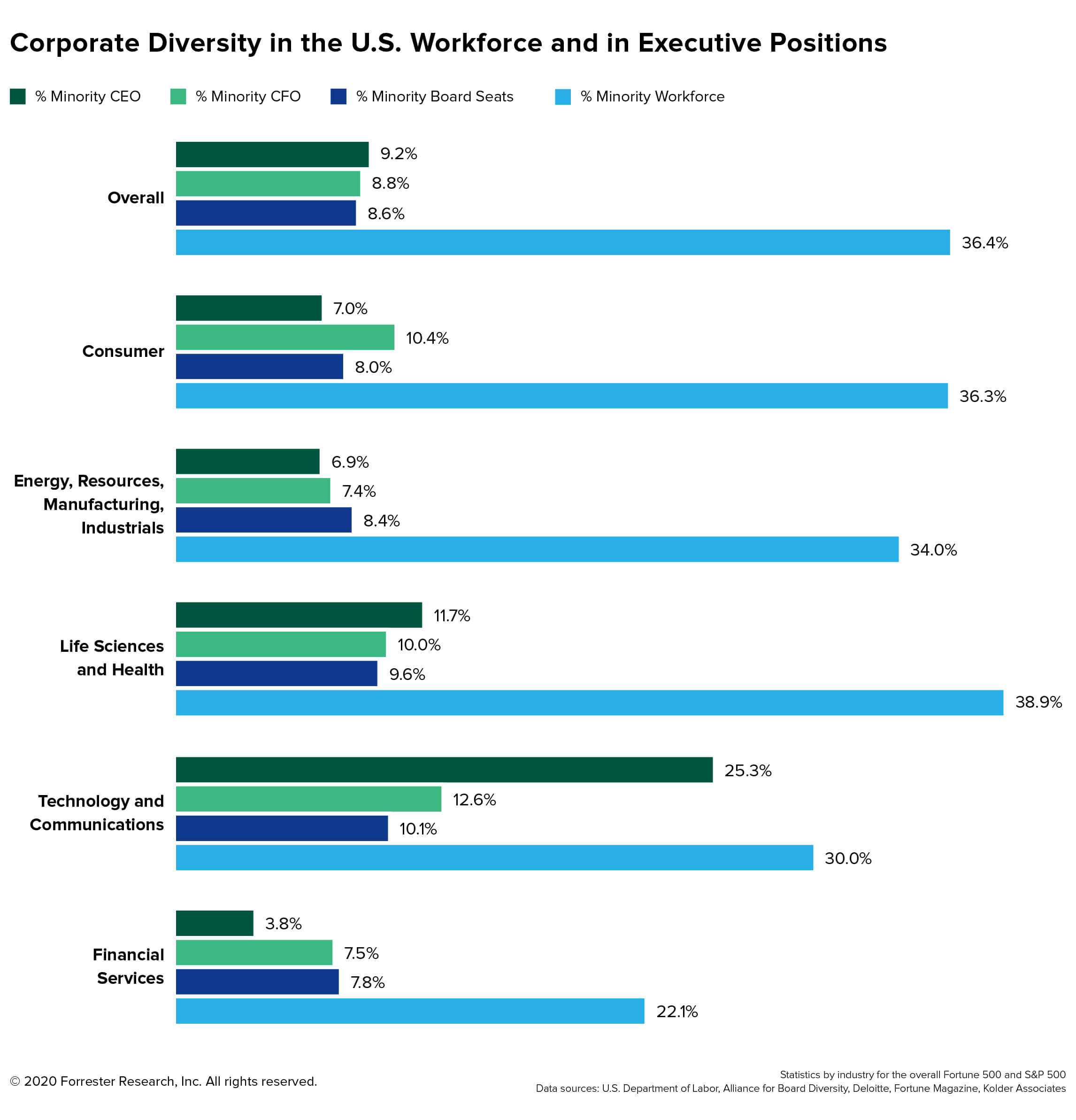How Diverse Are B2B Companies in America?
- America and the world have been shaken by protests against systemic racism and bias after the killing of George Floyd Jr. by police
- B2B corporate leaders have expressed support and solidarity with protesters and recognize the need for change
- Data gathered from numerous sources on levels of diversity and inclusion show that B2B companies need to take far more action on these issues
On May 25, George Floyd Jr., an African American man, was killed by Minneapolis police during an arrest attempt. His videotaped death quickly sparked protests and demonstrations across the United States and the world and reignited a smoldering conversation about racism and equality.

Corporate America quickly chimed in. Businesses large and small expressed solidarity with protestors, indignation at institutional racism, and support for the Black Lives Matter movement and related organizations. Many made public pronouncements across social media and elsewhere, often from executive leaders who expressed their resolve to lend support for change. Prominent B2B companies including Salesforce, Amazon Web Services, Boston Scientific, Cisco, and CitiGroup, added their voice to this chorus.
All of this begs the question: Are B2B companies actually taking any actions to resolve issues of racism and equality, starting from within their own employee ranks, or is this lip service? Said more bluntly, is this cause-washing?
One way to explore this is to look at existing levels of equality and diversity across B2B organizations. Are B2B companies hiring a diverse workforce? Do B2B organizations provide equal opportunities and career support for employees of color? Are they represented in the executive leadership team and on the company board? The answers to these questions can help illuminate the scale of discrimination that pervades corporate life and the depth of the problem B2B companies face.
I looked at heavily weighted B2B sectors in the Fortune 500 and S&P 500. With the help of data from a range of sources — the Alliance for Board Diversity, Deloitte, Fortune magazine, Crist Kolder Associates, and the U.S. Department of Labor — I examined diversity in hiring, C-level appointments, and board makeup. I also compared various B2B business categories with consumer businesses.
Gathering this information wasn’t straightforward (the way data is categorized changes across data sets, and some data covered different groups of companies), so I had to be cautious in interpreting the results. That said, the numbers tell a very clear story.
Let’s start by looking at minority representation in the Fortune 500/S&P 500 overall (shown at top of chart). These groups make up about 37% of the overall U.S. workforce, but minority representation in executive positions is far, far below this level. Fewer than 10% of Fortune 500 and S&P 500 CEOs are minorities, and less than 9% have minority CFOs. Less than 9% of board seats are held by minorities. This gap is astonishing and only gets worse when you examine the details: There are only four black CEOs in the Fortune 500, and the number has actually declined in recent years.
B2B companies largely fall into the same pattern as the overall data, with some very notable exceptions. Looking first at technology and communications companies, about 25% of CEOs are minorities — much higher than the average and close to the overall minority population in that industry. The sector also outperforms on minority representation across CFOs and board members. In contrast, financial services does much worse than the average: Less than 4% of CEOs are minorities, and even the minority general workforce in financial services is far below the average.
An entirely reasonable reaction to this data is either despair or rage. It’s abundantly clear that either diversity is not a real priority for businesses, or that endemic issues are at play that will be very hard to overcome — or a combination of both. In either case, and despite their often sincere intentions, the pious pronouncements of CEOs can ring hollow and often sound like platitudes.
This gap between words and actions doesn’t go unnoticed, especially now, and results in an erosion of trust and confidence in the brand. To some, these words often seem inauthentic, sanctimonious, and insufficient. Brands need to do more, rather than say more, on these issues. This is hard work. The route to achieving this is alignment to a clear brand purpose and commitment to specific activities that deliver on that purpose. Start by looking inward and holding the organization accountable for its actions. Anything less will be judged harshly. Anything less will damage the brand and have bottom-line business consequences.
But the news isn’t all bad. In the B2B world, there are indications that meaningful progress can be made. The tech sector has grown and flourished and, in the process, created a more inclusive and diverse workforce than most other industries. The ascension of minorities to executive positions has created greater representation at all levels. This industry is one of the most vocal supporters of greater diversity, and it acts on its words. It has a stake in the outcome. To be clear, there are issues here, too: Women are largely under-represented, and many of the gains in diversity are disproportionately Asian Americans gains, leaving out other groups. But the tech sector can be a model for a first step in how all industries can begin the long process of bringing about meaningful change.
